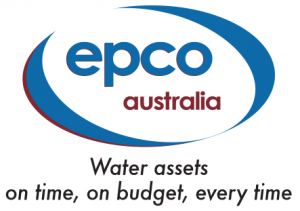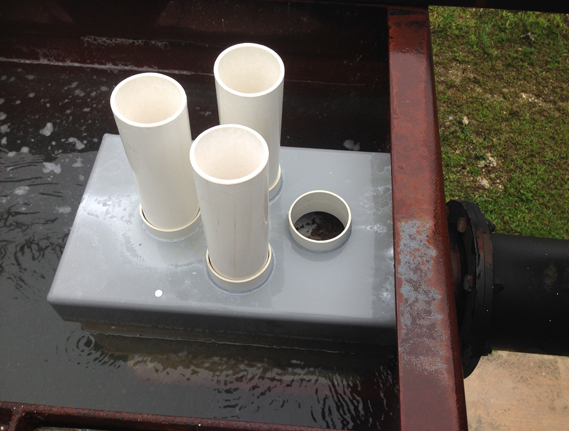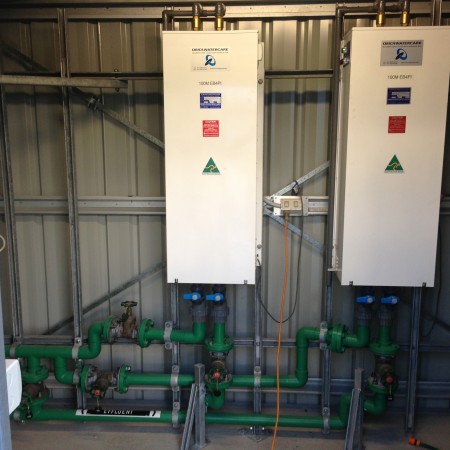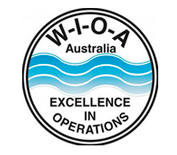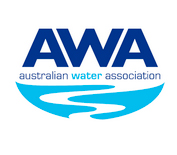Disinfection
While most steps in sewage treatment can lead to some reduction in pathogenic organisms, specific disinfection steps are generally required to ensure that recycled water is fit for use. Among the disinfection options available for recycled water are chlorine (delivered as liquid sodium hypochlorite, calcium hypochlorite tablets, or via anodic oxidation), chlorine dioxide, UV radiation, membrane filtration, pasteurisation (thermal disinfection) and advanced oxidation processes involving use of ozone, hydrogen peroxide or titanium dioxide in combination with UV.
Chlorination: Chlorine is routinely added to drinking water supplies. The chlorine dose and contact time required to ensure adequate disinfection of STP effluent will depend on the characteristics of the effluent (eg, pH, BOD and TSS), the chlorine demand (determined by the presence of organic matter, ammonia,iron and manganese) and the final uses of the recycled water (eg, whether a residual is required.
Ultraviolet Radiation: Ultraviolet radiation is an effective disinfection process that does not produce by-products that may be toxic to humans or the receiving environment. UV dose is a produce of UV intensity and exposure time and is expressed as milliwatt seconds per square centimetre (mW.s/cm2). UV achieves disinfection by initialling a photochemical reaction that damages the DNA molecule within micro-organisms, so that cell division and consequently multiplication can no longer occur.UV disinfection is only effective with recycled water that has low suspended solids, turbidity and colour. A chemical residual, such as chlorine, may be required after UV disinfection to limit bacterial regrowth within the distribution system.
